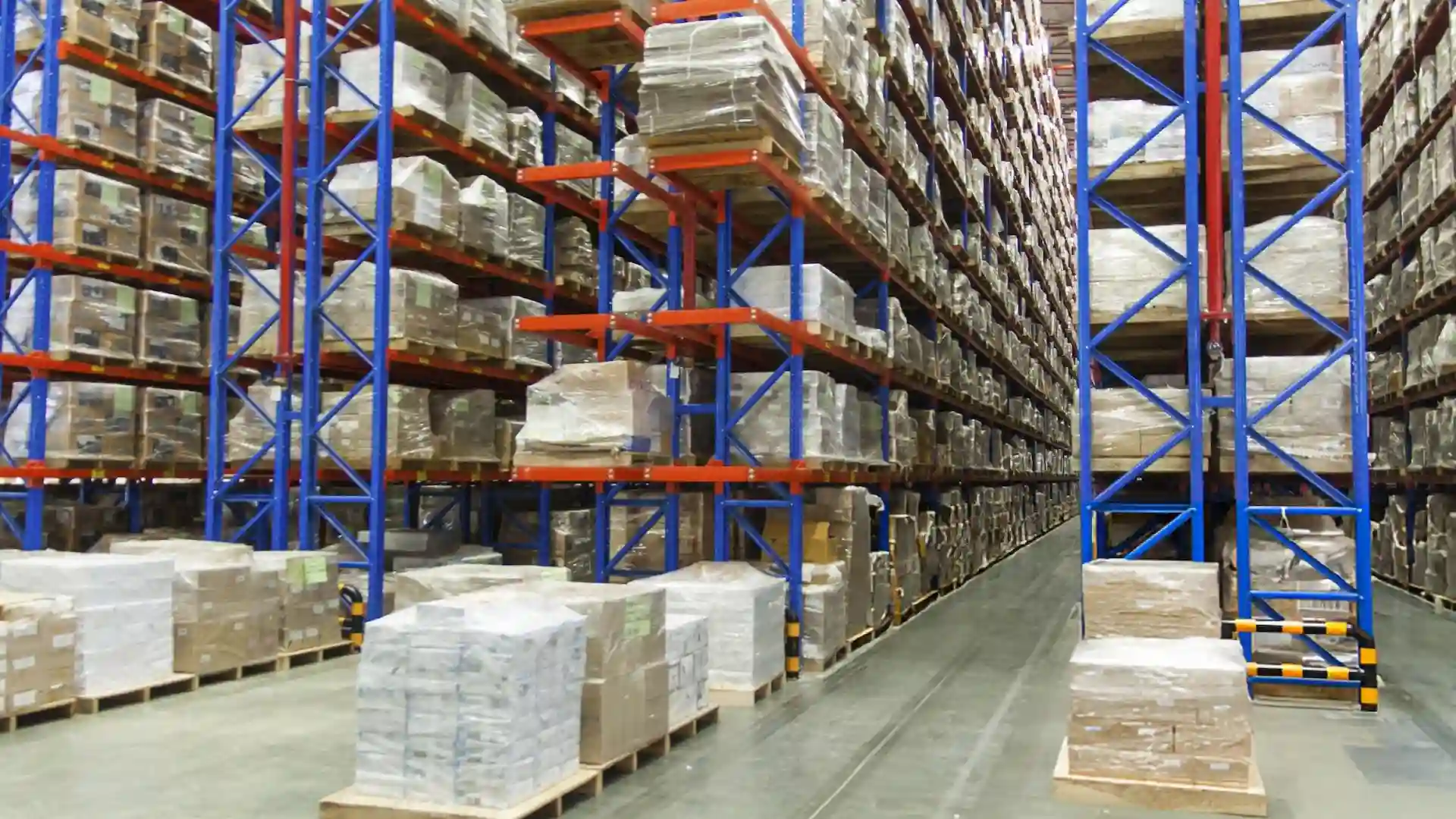Vertical Integration Explained: How to Assess, Plan, and Execute Vertical Integration Strategies for Your E-Commerce Business

As e-commerce businesses grow, they face increasing competition, rising operational costs, and complex supply chain dynamics. Vertical integration can provide a solution by offering control over the production and distribution process, allowing businesses to improve efficiency, reduce costs, and enhance customer satisfaction. In this guide, we’ll explore vertical integration in detail and explain how to assess, plan, and execute a vertical integration strategy for your e-commerce business.
What is Vertical Integration?
Vertical integration is a business strategy where a company controls multiple stages of its supply chain. This approach involves taking ownership of upstream (suppliers and production) or downstream (distribution and retail) operations, allowing for a greater degree of control over the entire process. In an e-commerce context, vertical integration could mean handling your manufacturing, warehousing, logistics, or even customer service in-house instead of relying on third-party providers.
Types of Vertical Integration: Forward and Backward
- Forward Integration: This approach involves moving downstream in the supply chain, closer to the end customer. For example, a manufacturer might open its own e-commerce store to sell directly to consumers, bypassing retailers.
- Backward Integration: Here, the business takes control of upstream activities. An e-commerce retailer might invest in production facilities to manufacture its own products, thereby reducing reliance on suppliers.
Benefits of Vertical Integration for E-Commerce Businesses
Improved Operational Control
With vertical integration, you gain direct control over each stage of the supply chain, from production to customer service. This control helps reduce inefficiencies, ensures better quality, and enables seamless coordination across all processes.
Cost Control and Profit Margins
One of the biggest incentives for vertical integration is cost savings. By owning more parts of the supply chain, companies can eliminate the markups associated with outsourcing or third-party providers, enhancing profit margins.
Enhanced Quality Assurance
Vertical integration allows businesses to monitor and control quality at every stage, resulting in superior product consistency and reliability. E-commerce businesses can especially benefit from quality assurance by building brand loyalty and reducing returns and exchanges.
Competitive Advantage and Market Share
Controlling the supply chain gives businesses a strategic advantage over competitors who rely on third-party providers. This advantage can translate into faster delivery times, better customer experiences, and increased market share.
How to Assess if Vertical Integration is Right for Your E-Commerce Business
Not every e-commerce business will benefit from vertical integration. To determine if it’s the right approach, consider the following factors:
1. Conduct a Value Chain Analysis
Assess each component of your supply chain to understand where you can add the most value. Determine which activities have the potential to provide competitive advantages if brought in-house, such as production, warehousing, or logistics.
2. Analyze Market Trends and Industry Dynamics
Evaluate current trends in your industry and the e-commerce market. If suppliers or distributors have high bargaining power, or if customer expectations for speed and quality are rising, vertical integration may be more beneficial.
3. Perform a Cost-Benefit Analysis
Estimate the costs associated with acquiring or developing new capabilities within your supply chain, including potential savings from reduced outsourcing expenses. Compare this with expected benefits in terms of cost control, increased revenue, and operational efficiency.
4. Assess Scalability and Resource Allocation
Evaluate your business’s ability to handle the additional responsibilities and whether you have the resources to scale these operations. Vertical integration requires significant investment in terms of capital, workforce, and technology.
Strategic Planning for Vertical Integration
If vertical integration aligns with your business goals, it’s essential to have a comprehensive plan to ensure a smooth transition.
1. Define Strategic Objectives and KPIs
Determine what you want to achieve with vertical integration, such as improved profit margins, better customer satisfaction, or enhanced quality control. Set specific KPIs (Key Performance Indicators) like cost savings, lead time reduction, or customer retention rates.
2. Choose Between Partial or Full Integration
Decide how much control you want over your supply chain. A partial integration strategy allows you to bring in only critical operations, like warehousing or customer service, while leaving others to external partners. Full integration involves taking control of every aspect, from production to retail.
3. Map Out an Implementation Roadmap
Outline a step-by-step roadmap for implementing vertical integration. This includes tasks such as resource allocation, staff training, infrastructure development, and technology adoption. A detailed roadmap helps ensure that each phase is executed smoothly, minimizing disruptions.
4. Prioritize Technology Integration
Technology is essential for successful vertical integration. Invest in software solutions like ERP (Enterprise Resource Planning) systems to unify processes and improve real-time visibility across the supply chain. Automation tools can also help optimize operations, from inventory management to customer support.
Execution: Implementing Vertical Integration in Your E-Commerce Business
1. Acquire or Develop the Necessary Resources
Vertical integration often requires new resources, whether in the form of manufacturing facilities, warehouses, or transportation fleets. Decide whether to purchase, lease, or develop these resources based on your budget, long-term goals, and operational needs.
2. Establish Supplier Relationships or Develop In-House Capabilities
If backward integration is part of your strategy, you may need to invest in relationships with suppliers or develop your production capabilities. This step is crucial for securing materials, maintaining product quality, and ensuring reliable supply chains.
3. Redesign the Distribution and Delivery Process
For forward integration, focus on optimizing distribution channels and improving delivery times. Many e-commerce businesses invest in their own logistics teams to ensure timely and efficient delivery, reducing reliance on third-party logistics providers.
4. Ensure Customer Satisfaction and Maintain Brand Loyalty
One of the goals of vertical integration is to improve the customer experience. Train customer service teams to handle issues directly and establish quality standards that meet or exceed customer expectations, building brand loyalty and satisfaction.
Managing Risk in Vertical Integration
Vertical integration offers numerous advantages, but it also introduces risks. Managing these risks effectively is essential to sustaining long-term success.
1. Perform Regular Performance Metrics Evaluation
Set up metrics to measure the effectiveness of vertical integration, such as inventory turnover rates, production costs, and customer satisfaction scores. Regular evaluation allows you to identify areas for improvement and make necessary adjustments.
2. Mitigate Financial Risks with Diversified Revenue Streams
Vertical integration can be capital-intensive, and there’s always a risk if your industry faces downturns. Diversify revenue streams where possible to mitigate financial risk and ensure a steady income flow.
3. Engage Stakeholders in Change Management
Vertical integration brings significant changes, impacting employees, suppliers, and customers. Engage all stakeholders early in the process to secure buy-in, reduce resistance, and foster a smoother transition. Transparent communication is vital to maintaining positive relationships and easing the shift.
4. Plan for Scalability and Adaptability
E-commerce markets evolve rapidly, and a rigid vertically integrated model may struggle to adapt. Design your supply chain with flexibility in mind, allowing for adjustments based on demand fluctuations, new technologies, or shifts in consumer behavior.
Case Studies of Vertical Integration in E-Commerce
To illustrate how vertical integration works in practice, let’s look at a few examples:
Amazon
Amazon’s vertical integration strategy includes owning its logistics network, from warehouses to delivery trucks. This enables Amazon to offer fast shipping options like Prime and control the customer experience end-to-end. By managing logistics in-house, Amazon can optimize delivery speed, reduce costs, and improve customer satisfaction.
Warby Parker
Warby Parker vertically integrated by designing and manufacturing its own eyewear. This model allowed the company to offer high-quality products at lower prices by cutting out middlemen. Warby Parker’s direct-to-consumer approach also helped them maintain control over their brand and deliver a consistent customer experience.
Tesla
Tesla took vertical integration further by manufacturing its vehicles, producing batteries, and even developing software in-house. This integration allows Tesla to innovate faster, control production quality, and ensure the customer experience is aligned with its brand values.
Vertical Integration vs. Outsourcing: Making the Right Choice
Vertical integration isn’t the only approach to streamline e-commerce operations; outsourcing remains a popular alternative. When deciding between vertical integration and outsourcing, consider the following:
- Cost and Resource Allocation: Outsourcing may offer short-term cost savings, but vertical integration can result in more significant long-term savings.
- Operational Control and Flexibility: Outsourcing can limit control and flexibility, making it harder to differentiate your brand. Vertical integration gives you control but requires greater investment and oversight.
- Scalability and Risk Management: Outsourcing allows for quick scalability but often involves risks related to vendor reliability. Vertical integration is more stable but may require significant upfront investment and time to scale.
Conclusion: Is Vertical Integration Right for Your E-Commerce Business?
Vertical integration can provide a powerful competitive edge in the e-commerce industry by enhancing operational control, improving quality assurance, and optimizing cost control. However, it requires substantial planning, resources, and risk management. To determine if vertical integration is the right choice, assess your supply chain needs, analyze industry dynamics, and consider your long-term business objectives.
If you choose to move forward, plan carefully, prioritize technology integration, and monitor performance metrics to ensure a successful transition. By following these strategies, you can unlock the full potential of vertical integration, positioning your e-commerce business for sustained growth, enhanced customer satisfaction, and improved profitability.
Frequently Asked Questions about Vertical Integration for E-Commerce Businesses
What is vertical integration in e-commerce, and how does it work?
Vertical integration in e-commerce is a business strategy where an online retailer controls multiple stages of its supply chain, such as manufacturing, warehousing, and distribution. By bringing these processes in-house, e-commerce businesses gain more control over production quality, costs, and delivery times, leading to a more seamless customer experience.
What are the main benefits of vertical integration for e-commerce companies?
Vertical integration offers several advantages for e-commerce businesses, including:
- Cost control: Reduces reliance on third-party providers and lowers overall costs.
- Quality assurance: Ensures consistent quality across products and services.
- Improved delivery times: By managing logistics, companies can offer faster and more reliable shipping.
- Increased competitive advantage: Greater control over the supply chain can set a brand apart from competitors, leading to higher customer satisfaction.
What is the difference between forward integration and backward integration?
Forward integration is when an e-commerce business takes control of downstream operations, like distribution or direct sales, allowing the company to engage with customers directly. Backward integration, on the other hand, involves controlling upstream processes, such as sourcing raw materials or manufacturing products. Both approaches can help e-commerce businesses improve cost efficiency, quality, and control over the entire value chain.
How can an e-commerce business determine if vertical integration is the right strategy?
Businesses can assess the potential of vertical integration by conducting a cost-benefit analysis, evaluating current supply chain inefficiencies, and examining market trends. They should also consider factors like scalability, resource availability, and long-term strategic goals to determine if integrating parts of their supply chain will deliver a competitive advantage.
What are some risks associated with vertical integration for e-commerce companies?
While vertical integration has numerous benefits, it also involves risks, such as:
- High upfront costs: Acquiring or building new capabilities requires significant investment.
- Increased operational complexity: Managing multiple supply chain stages can be challenging and time-consuming.
- Potential lack of flexibility: Vertically integrated companies may find it harder to adapt to sudden market changes. Effective planning, risk management, and performance monitoring are essential to mitigating these risks.

.svg)
.svg)
.svg)




